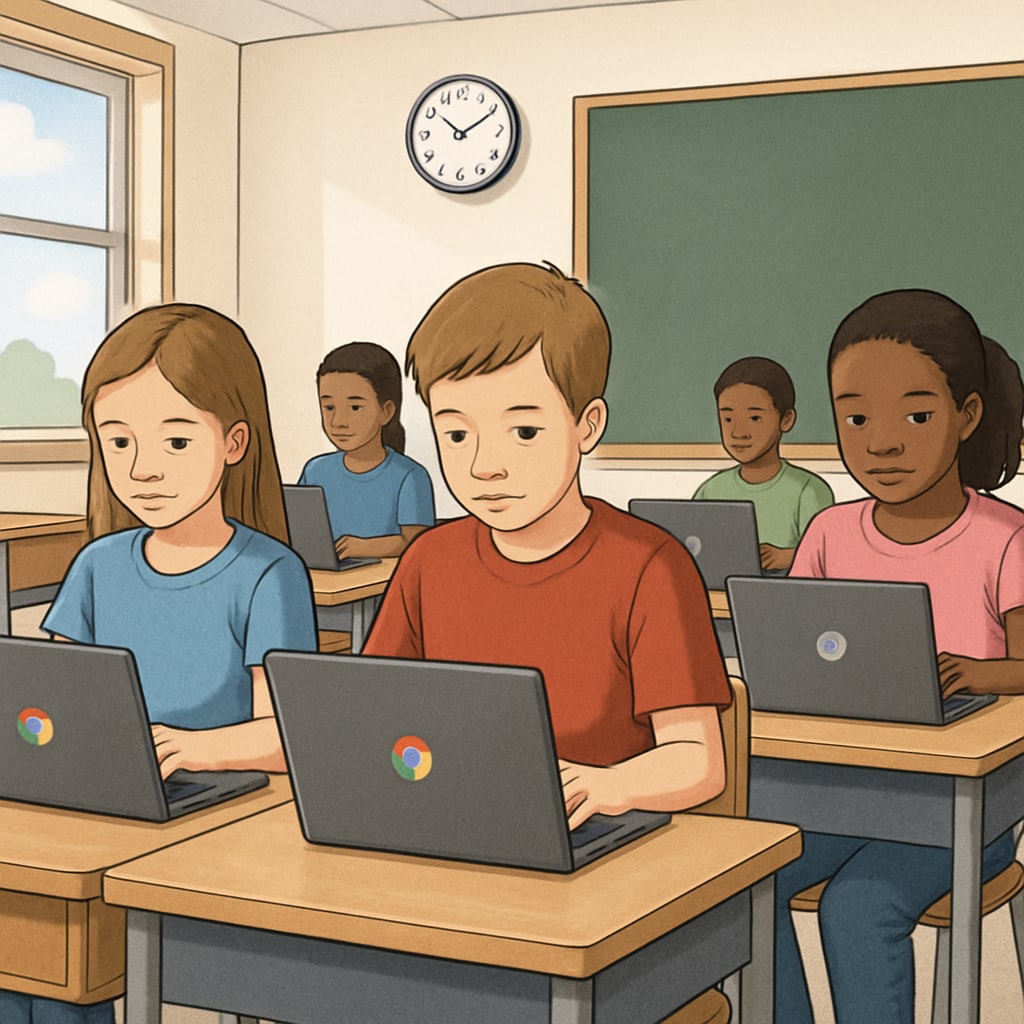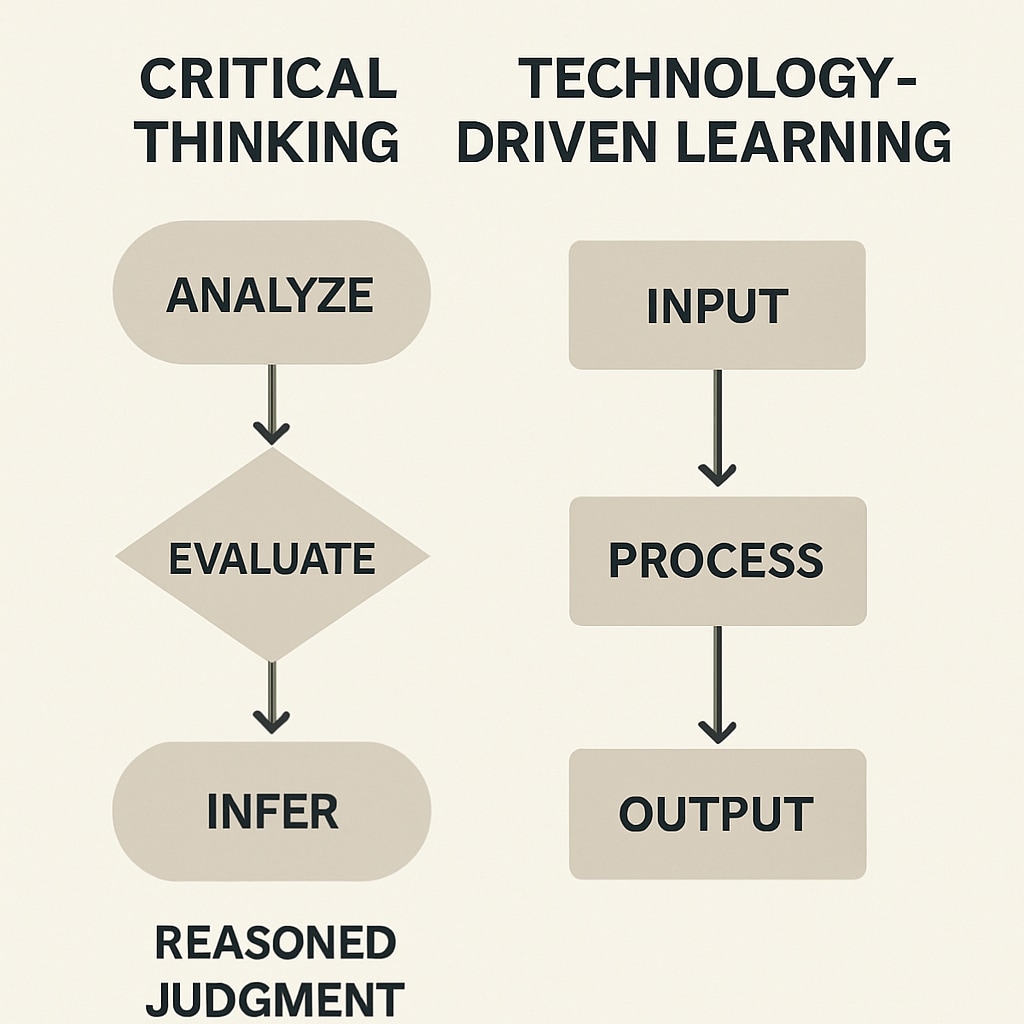In today’s fast-paced K12 education landscape, the use of education technology, such as Chromebooks, has become increasingly prevalent. These tools promise efficiency, accessibility, and engagement in the classroom. However, their widespread adoption raises a critical question: is the reliance on EdTech compromising the deep cognitive development of students, particularly their critical thinking skills? While digital tools can enhance learning experiences, educators must strike a balance between leveraging technology and fostering the intellectual depth necessary for real-world problem-solving.
The Rise of EdTech in Education
Education technology (EdTech) has revolutionized the way teachers deliver lessons and students absorb knowledge. Platforms like Google Classroom and devices like Chromebooks provide instant access to learning materials, interactive activities, and collaborative tools. These innovations have proven particularly valuable during the COVID-19 pandemic, when remote learning became the norm. As a result, the adoption of EdTech is expected to remain a cornerstone of modern education.
However, the efficiency of EdTech comes with trade-offs. For example, tools like Chromebooks encourage multitasking and fast-paced information consumption, which can inadvertently hinder students’ ability to engage deeply with complex problems. According to Britannica, effective education requires not just the transfer of knowledge but also the cultivation of critical thinking, which necessitates time, reflection, and focus—qualities that excessive reliance on technology may diminish.

Challenges to Critical Thinking in the Age of Chromebooks
Critical thinking—the ability to analyze, evaluate, and synthesize information—is a cornerstone of cognitive development. Yet, the design of many EdTech tools prioritizes surface-level engagement over deep processing. For example, pre-packaged answers and automated grading systems on Chromebooks often discourage students from exploring alternative solutions or questioning assumptions.
Moreover, the constant availability of digital tools can lead to over-reliance. A study by the Wikipedia entry on technology and education indicates that when students are overly dependent on technology, they may struggle to develop independent problem-solving skills. This over-dependence risks creating a generation of learners who are adept at finding quick answers but lack the ability to critically evaluate the information they encounter.

Striking the Right Balance
To harness the benefits of EdTech while mitigating its drawbacks, educators and policymakers must take deliberate steps to integrate technology responsibly. Here are some strategies to maintain a balance between EdTech and cognitive growth:
- Encourage Analog Problem-Solving: Incorporate activities that require students to think critically without relying on digital tools, such as debates, creative writing, or hands-on experiments.
- Limit Screen Time: Establish guidelines for the amount of time students can spend using Chromebooks or other devices during class to ensure balanced learning experiences.
- Teach Digital Literacy: Equip students with the skills to critically evaluate online information, distinguishing credible sources from misinformation.
- Blend Learning Approaches: Adopt hybrid teaching models that combine traditional methods, such as textbooks and group discussions, with EdTech tools.
By implementing these strategies, educators can create an environment where technology supports, rather than supplants, the development of critical thinking skills.
The Future of Education: Human and Digital Synergy
As education technology continues to evolve, its role in classrooms will become even more integral. However, the ultimate goal of education remains the same: to prepare students for the complexities of the real world. This requires not only technical proficiency but also the ability to think critically, adapt, and innovate.
Educators, therefore, face the challenge of shaping a future where EdTech complements human cognition rather than undermining it. Tools like Chromebooks should be seen as aids—not replacements—for intellectual curiosity and engagement. By fostering a culture of mindful technology use, the education system can ensure that the next generation of learners is both tech-savvy and deeply thoughtful.
In conclusion, achieving a balance between EdTech and cognitive development is not just a pedagogical ideal—it is a necessity. As we advance further into the digital age, let us not forget that the most powerful tool in any classroom remains the human mind.


